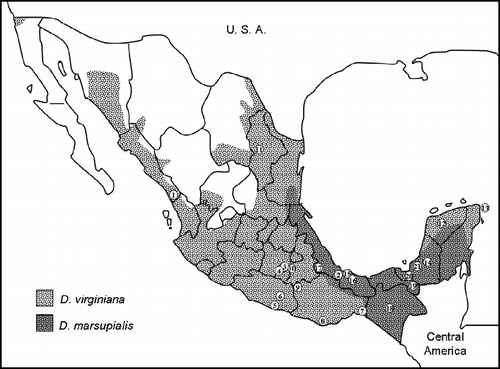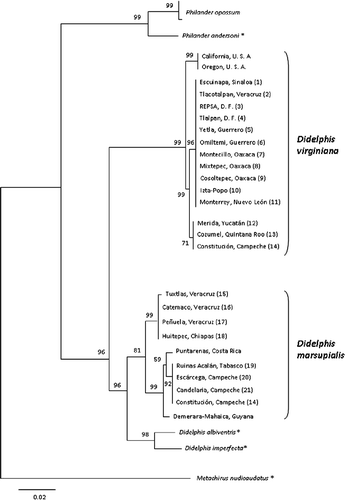Figures & data
Figure 1. Geographical distribution of the Virginia Opossum (D. virginiana) and the Common Opossum (D. marsupialis) in Mexico (modified from Gardner Citation1973). Numbers correspond to specimen localities described in .

Table I. Sequence origin of the Cox1 and the voucher museum specimen of the Virginia Opossum (D. virginiana), the Common Opossum (D. marsupialis), and other marsupial species.
Figure 2. NJ tree of 49 Cox1 sequences of opossum species of the genera Didelphis, Philander, and Metachirus using K2P genetic distances. Numbers above the nodes are bootstrap support values based on 1000 replicates. *Sequence downloaded from BOLD (http://www.boldsystems.org).

Table II. Average genetic distances between opossum species of the genera Didelphis, Philander, and Metachirus estimated according to the K2P model of nucleotide substitution for barcode sequences.